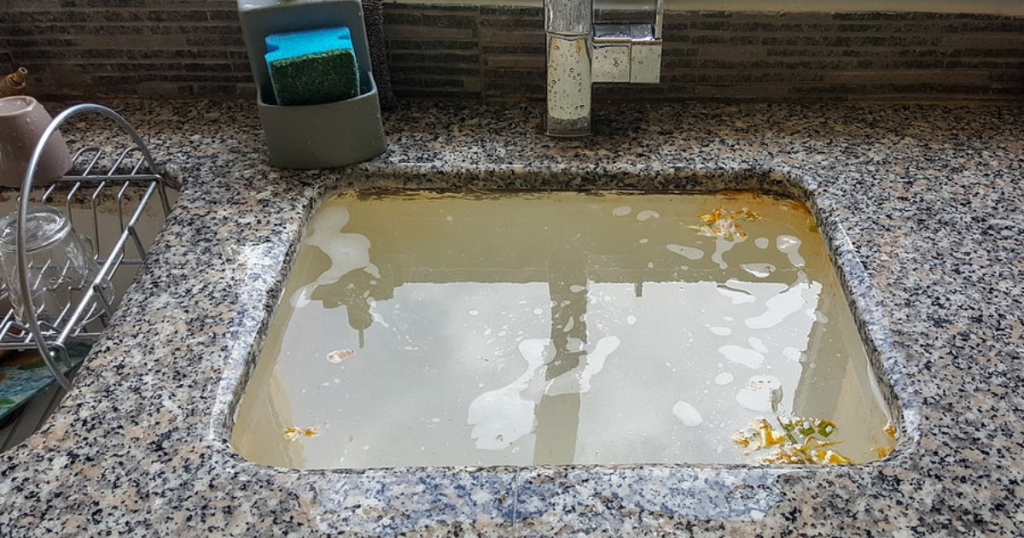
Most homeowners don’t think about tub or sink drains until they don’t work. Many times, the systems perform well and don’t require much attention. However, when your kitchen or bathroom sink clogs with fats, hair, oils, and foreign objects, you definitely have to do some work to fix them.
In some cases, you can deal with cleaning clogged drains yourself. It’s wise to try, though you may still need to call a professional plumber like us. We’ve come up with a few money-saving tips to assist!
Tips to Try When Cleaning a Blocked Drain
Whether you have a clogged sink, shower drain, garbage disposal, or toilet, you want a natural way to clean drains. There are better choices than chemical cleaners to remove debris, such as food scraps, long hair, and mineral deposits. Here are eight things to try.
1. Boiling Water
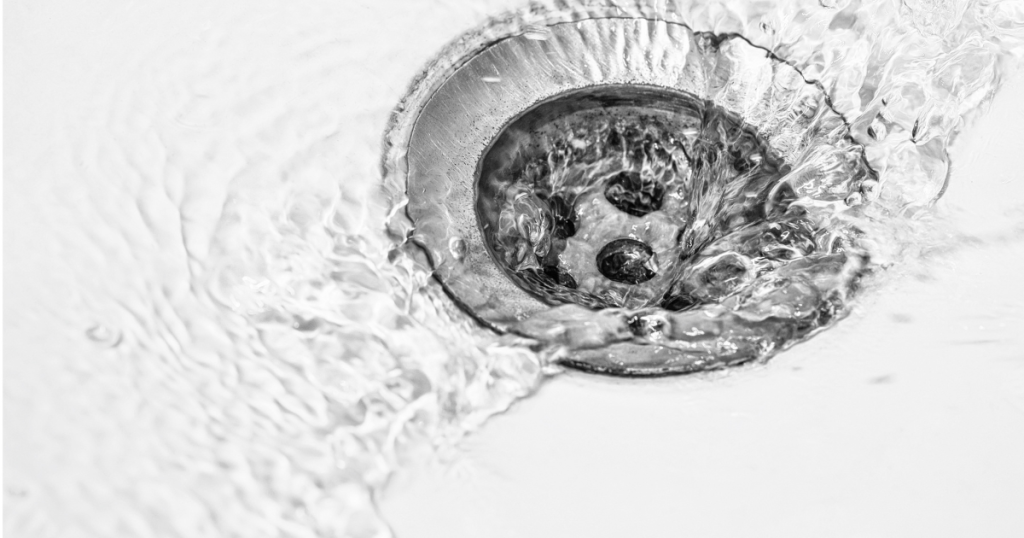
If there’s slow draining and no standing water, hot tap water might be enough to dissolve oily or fatty drain clogs. If you have a drain clog, here’s what to do:
- Have 1/2 gallon of boiling water ready.
- Carefully pour the water into the drain directly.
- Flush with hot water for a few minutes.
2. Dish Soap
Sometimes, dish soap can clear greasy clogs in your kitchen drains. Don’t go overboard, though, because too much soap will sud up and could coagulate.
- Squirt about 1 ounce of soap into the drain.
- Slowly pour boiling water directly into the drain.
- Flush it with hot water for a few minutes.
3. Baking Soda and Vinegar Method
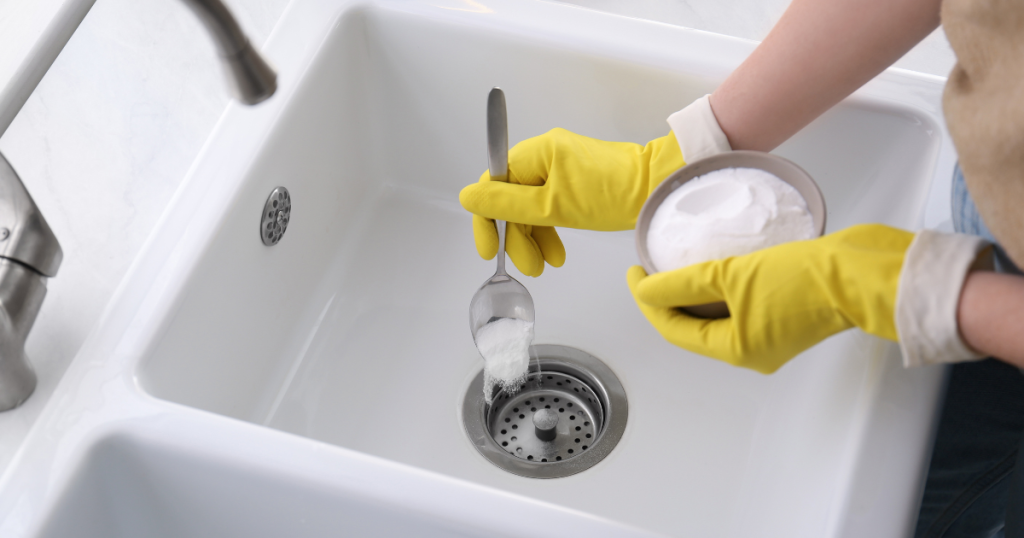
The baking soda and vinegar method is one of the top homemade options to flush drains free of clogs. Make sure you’re not using old baking soda and vinegar. Here’s the method:
- Pour 1/2 cup of the baking soda (sodium bicarbonate) into the drain.
- Immediately afterward, pour 1/2 cup of your white vinegar down.
- Follow that with many cups of boiling water.
- Let it sit for about an hour.
4. Lemon Juice and Baking Soda Method
Another way to clear your kitchen sink or tub of clogs is by using lemon juice and baking soda. The baking soda reacts similarly here as it does with vinegar:
- Mix about one cup of your baking soda with about three cups of boiling water and a cup of lemon juice.
- Pour that mixture into your slow drain.
5. Basic Tools to Unclog a Sink Drain
If the above methods don’t work for your drain clogs, you may need some tools. Consider a coat hanger or invest in inexpensive drain cleaning tools that are about 24 to 36 inches long with barbed wire. These might be better if you have a septic system because you’re not using household cleaners which might cause more problems.
- Insert the plastic tool into the drain as far as you can.
- Slowly pull it back out, twisting slightly as you go.
- Alternatively, you can untwist a coat hanger, leaving a small hook on the end.
6. Use a Plunger
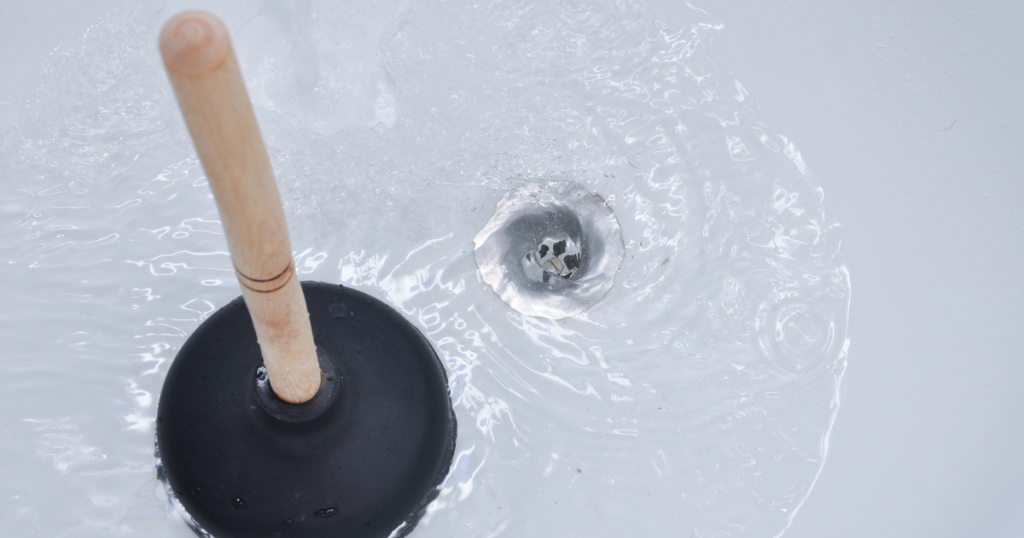
Plungers can clear clogs through suction action, which pulls the water through the system.
Typically, you will need to remove the overflow drain for tubs, showers, and bathroom sinks. Then, you will stuff a cloth rag inside the plug hole so that the pressure you create will not escape. On a double-basin sink, you simply plug one drain to seal it.
Then, you will run the hot water until there are 1 to 2 inches of standing water. Place your plunger over the drain, ensuring that the lip is flushed with the bottom. Vigorously move your plunger up and down many times without it breaking contact.
Overall, plunging works on toilet clogs, bathroom drains, and kitchen drain clogs!
[Related: 4 Simple Tips To Do When Cleaning Bathroom Drain]
7. Take Apart Your P-Trap
If you have a serious clog and can’t flush hair or food particles out, you might have to deconstruct a little to find the issue. This works well for tubs and sinks with access to the trap from the lower floors.
You will pull that overflow trip lever for tub drains, but there’s a horizontal lift rod in the pop-up assembly on a sink. Then, follow these steps:
- Put a bucket under your P-trap.
- Loosen all the nuts holding it together. You may need a dry cloth or tongue-and-groove pliers.
- Remove your trap elbow and clean the debris.
- Replace your P-trap and test your drain.
[Related: How To Clean Sink Trap]
8. Drain Snake Usage
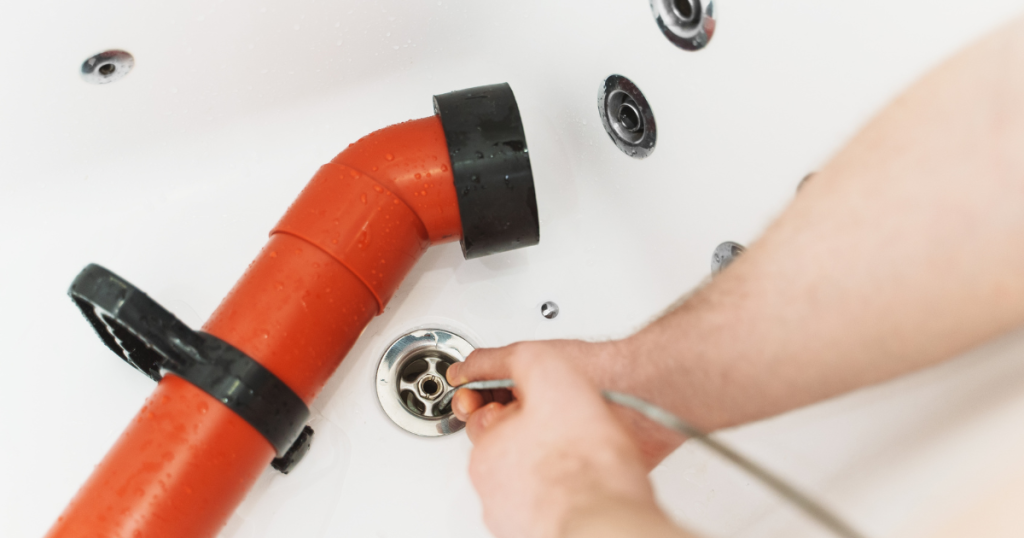
If you didn’t find anything in the P-trap, it’s best to use a drain snake, which you can find at various hardware stores. Generally, these tools are easy to use and come with instructions.
A Note on Chemical Drain Cleaners
We usually recommend that you don’t pour a chemical drain cleaner down your drain. It could seriously damage your pipes and other components.
[Related: 5 Signs You Should Call the Plumber Right Now]
DIY or Hire a Pro
If you followed all of these tips for drain plumbing, including the baking soda and snake, with no success, it’s wise to call us for assistance with your blocked drains.
Though a natural drain cleaner does wonders, it’s not always the best option and might not work on your drain. Call Stellar Plumbing to help today!
